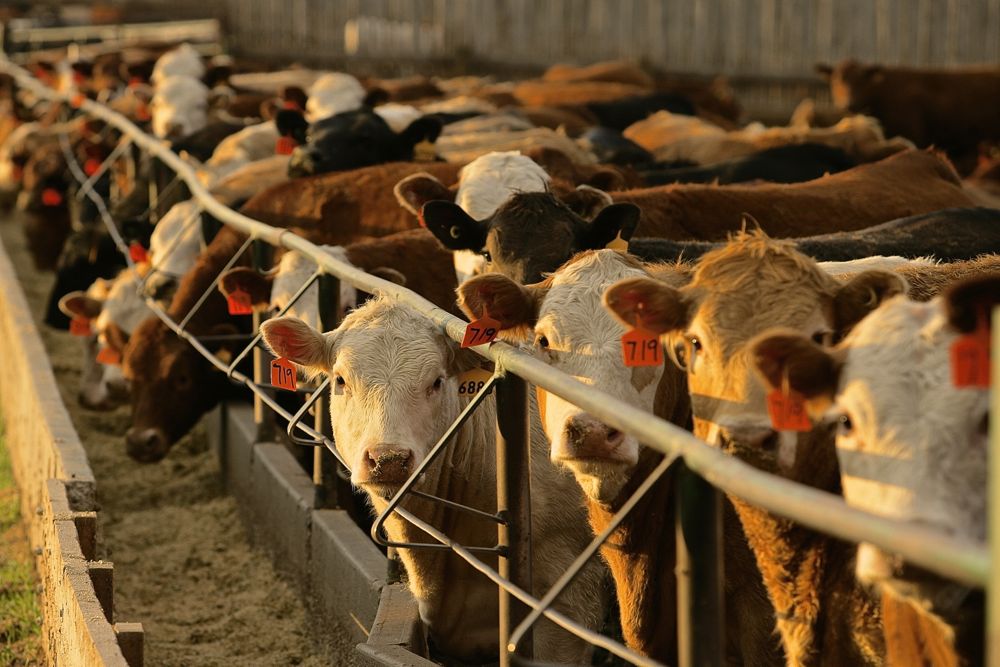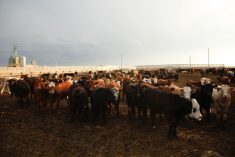Compared to last week, western Canadian yearling prices were relatively unchanged while calves traded $3 higher to $3 lower on average.
The yearling run is well underway and there was no shortage of buying interest. Finishing feedlots were very aggressive on quality packages coming fresh off grass. Once again, buyers focused on local cattle, causing the prices in southern Alberta to trade at a slight premium to other areas of Western Canada; however, order buyers in the non-major feeding regions had full decks which supported values across the Prairies. Ideas are that yearling supplies are down from year-ago levels and feedlot operators were anxious to secure ownership.
Read Also

Alberta crop conditions improve: report
Varied precipitation and warm temperatures were generally beneficial for crop development across Alberta during the week ended July 8, according to the latest provincial crop report released July 11.
Strength in deferred live cattle futures spilt over into nearby cash feeder prices. The steer-heifer spread appeared to narrow this past week. The competition for steers was quite severe. Buyers who were waiting for lower prices stepped forward this week, which seemed to double the size of the buying crowd. The barley harvest has been slow going in central and northern regions of Alberta and Saskatchewan. Feedlots in these regions don’t feel they can compete with operations in southern Alberta, where the harvest is in the final stages.
In southern Alberta, Charolais-blended steers weighing just under 950 lbs. were quoted at $187 while their lighter sisters averaging 915 lbs. were valued at $177. In central Alberta, larger-frame black mixed steers weighing 890 lbs. reportedly sold for $191 and mixed heifers averaging 850 lbs. were quoted at $176. In central Saskatchewan, larger-frame Simmental mixed steers weighing just over 980 lbs. were valued at $179 while larger-frame tan heifers coming in at 925 lbs. were quoted at $171. Backgrounded yearlings were trading at minimal discounts to cattle fresh off grass although the steer-heifer spread was wider on these cattle.
Calves took second stage this week and limited volumes once again made the market hard to define. However, it appeared the calves were slight premium in the eastern Prairie regions compared to the main markets in Alberta. Small volumes of various quality were on offer. In central Alberta, a small group of black steers weighing 660 lbs. were valued at $200 and 520-lb. steers weighing 520 lbs. were quoted at $220; unweaned heifers averaging 500 lbs. were quoted at $200 in the same region.
Barley prices in southern Alberta jumped by $5-$10 per tonne over the past week. Elevator companies in Saskatchewan are being fairly aggressive to secure export demand. It’s difficult for feedlots outside of Alberta to compete for yearlings because they don’t know where the cost per pound gain will end up. There are ideas that Statistics Canada will trim the barley yield estimate in its upcoming crop survey.
— Jerry Klassen manages the Canadian office of Swiss-based grain trader GAP SA Grains and Produits Ltd. and is president and founder of Resilient Capital, specializing in proprietary commodity futures trading and market analysis. Jerry consults with feedlots on risk management and writes a weekly cattle market commentary. He can be reached at 204-504-8339 or via his website at ResilCapital.com.














